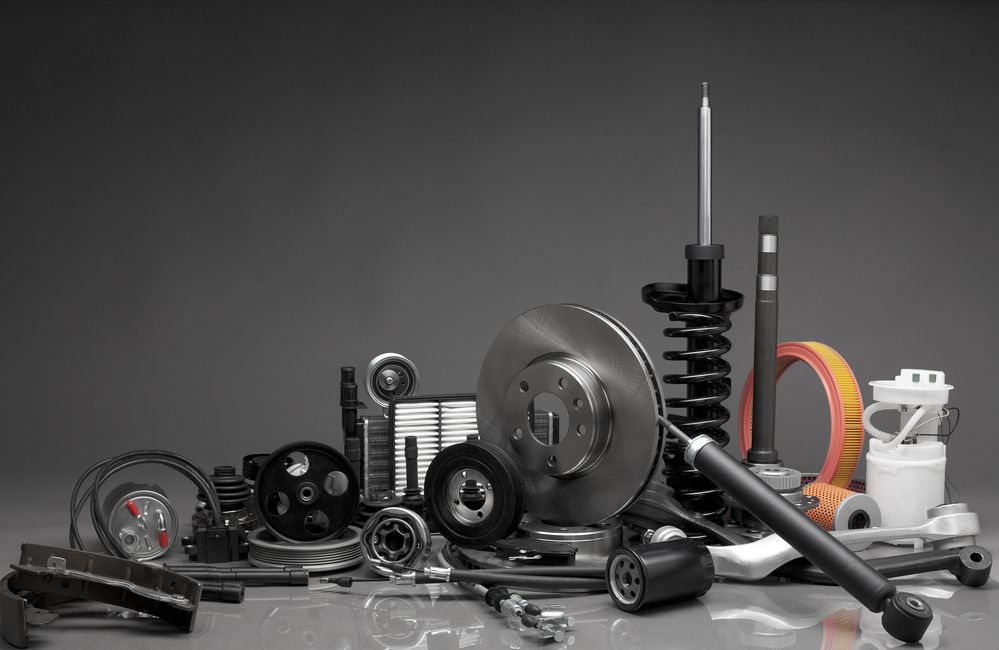Business
The dangers of counterfeit parts and how to protect yourself
There’s no excuse for not being on your guard against counterfeit parts if you do business in or around the electronics industry. From reputational damage to customer and employee injuries, making sure you work only with genuine, reliable parts is essential for your continued success and profitability.

There may not be an industry under the sun that doesn’t see its share of scams—including counterfeit parts. This concern is an especially significant one in the electronics industry, thanks in equal measure to the complexity and interconnectedness of modern technologies.
Performance, safety and security are just the tips of the iceberg when it comes to protecting your business and assets from counterfeit parts. Here’s what you need to know about the problem and how to avoid it.
The risks of counterfeit parts explained
Concerns over counterfeit parts might affect your internal processes and workflow—through the equipment and machinery you rely on each day—or your customers—through faulty products made dangerous by counterfeit parts of dubious origin. Consider the following essential issues.
1. Safety
We don’t need to explain why the safety of your customers and personnel is paramount. And it’s understandable that the parts that comprise the inner workings of your equipment might not be top-of-mind. But they probably should be.
Counterfeit parts are not held to the same internal or legal quality requirements. As a consequence, they’re far more likely to fail—with potentially catastrophic results—than products from verified sources, thanks to their lack of legal scrutiny or QC oversight.
The United States’ Department of Defense has been working for years to eliminate counterfeit parts from the Pentagon’s supply chains, with the understanding that doing nothing represents a very real danger to service members and the civilians they’re tasked with protecting.
2. Waste and lost sales
Reliable estimates say the total cost of counterfeit parts in global industry as a whole—both heavy industrial and consumer-focused organizations—is more than $250 billion per year. Taken as individual industries, that works out to $3 billion for the automotive industry and $75 billion for the semiconductor (electronics) industries alone.
3. Compromised performance and reputational damage
Performance benchmarking is a major focus in the electronics industry, where every new or redesigned product capitalizes on Moore’s Law to become faster, more capable and easier to use.
Nevertheless, when you’re sourcing parts for your products—or customers are looking for repair specialists or DIY solutions for their gear—it can be tempting to seek out low-cost third-party replacements instead of verified OEM parts. Doing so is almost always a mistake. Parts from unknown sources can make the devices that house them function sub-optimally, delivering a negative experience for the customer and potentially long-lasting reputational damage for your company.
Not every company needs to take the hard line on professional and DIY repairs as Apple does. However, they do have good reasons for being so picky about their parts supply chains and the parties who perform refurbs on their devices. They want to know the customer is experiencing these products at their full capabilities and as their designers originally intended.

With a globalized economy, it is so easy to distribute counterfeit parts across the globe from various manufacturers. (Photo by DepositPhotos)
Types of parts likely to be counterfeited and how to tell the difference
One of the opportunities of a globalized economy is also one of its greatest sources of worry: Just as reliable products from all over the world can be traded on a global marketplace, so can counterfeit parts—and from a huge variety of manufacturers and distributors.
Fortunately, we know some of the part types to look out for and some of the tricks these manufacturers employ to get you to buy their lackluster components. Here are a few issues to check for:
- Swapped specs and packaging: One of the most common counterfeit part scams out there is removing parts numbers from lower-specification parts and placing a high-spec parts number in its place. Alternatively, a dishonest distributor might remove a high-performing product from a shipping carton and replace it with a similar product with lower specs.
- Compromised parts sold as new: Pre-owned and even “factory reconditioned” equipment and electronics sometimes represent cost-saving opportunities. Just as frequently, they’re a source of counterfeit parts and risk. It’s not uncommon for third-party sellers to list malfunctioning components on auction and marketplace sites, sell them as new, and then retreat behind a no-refund store policy.
- Know the telltale signs: There are multiple signs you should look for. Make sure the part number on the label matches the part number stamped on the part. You can check the manufacturing dates and country of origin for accuracy. Pay close attention to the packaging too. Is any of it missing product protection you expected, such as desiccant packets, or have any of the tamper-evident features or labels been “tripped” already? Does the fit and finish of the logo, box and product itself match what you were expecting?
Which specific products should your electronics company be especially wary of when you’re shopping around? Integrated circuits, or ICs, are the most frequently counterfeited parts in the world of electronics. But others include microprocessors, logic boards, onboard memory and transistors.
Know how to protect yourself
How can you protect your business’s continued success, your customers’ satisfaction and your employees’ safety from counterfeit parts? Multiple inspection types can reveal which products are legitimate and which are not, including optical microscopy, x-rays and electrical testing. But the truth is, a candid conversation with your manufacturer and distributor partners is probably the best way to evaluate how seriously they take internal and legal product standards.
If anything doesn’t sound or feel above-board, you’re well within your rights to walk away. As we’ve seen, this isn’t a part of your business where cutting corners work in your favor.
—
DISCLAIMER: This article expresses my own ideas and opinions. Any information I have shared are from sources that I believe to be reliable and accurate. I did not receive any financial compensation for writing this post, nor do I own any shares in any company I’ve mentioned. I encourage any reader to do their own diligent research first before making any investment decisions.

-

 Africa6 days ago
Africa6 days agoMorocco’s Wheat Dependency Persists Despite Improved Harvest
-

 Crypto2 weeks ago
Crypto2 weeks agoBrazil’s Crypto Boom Threatened by Surprise Tax Proposal
-

 Biotech1 day ago
Biotech1 day agoEcnoglutide Shows Promise as Next-Generation Obesity Treatment
-

 Markets1 week ago
Markets1 week agoCocoa Prices Drop Amid Speculative Selling and West African Supply Concerns


























You must be logged in to post a comment Login